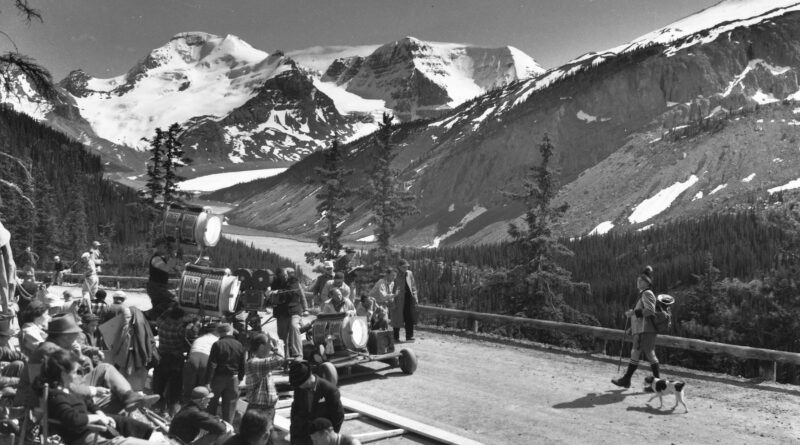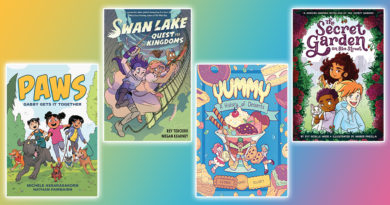Mary Graham unearths Alberta’s untold film history in A Stunning Backdrop: Alberta in the Movies

Mary Graham is a British-Columbia based author known for her work as a film historian and documentary journalist. With a diverse academic background that includes a BA in Twentieth-century Thought (philosophy, literature, and history), as well as graduate degrees in Journalism and Marine Law, Graham brings a unique breadth to her research and writing. Her latest book, A Stunning Backdrop: Alberta in the Movies, 1917-1960, delves into the rich and not widely-known history of filmmaking in Alberta, Canada. With a keen eye for detail and a dedication to bringing multiple perspectives to light, Graham weaves together personal narratives, documentary journalism, visual and historical retrospection to create a comprehensive account of Alberta’s cinematic past for the first half of the 20th century.
The deeply curious Graham ‘s journey into the world of film history began with her desire to shed light on often overlooked perspectives. “This involved a deep dive into many areas never really considered history, such as the importance of the Nakota, Cree, Blackfoot, Sarcee and other nations to filmmaking.” For two years, Graham worked closely with ten to fifteen Elders, uncovering their significant contributions and documenting their unheralded involvement in filmmaking. A Stunning Backdrop thus intertwines cultural, social, and film history to provide a deeper understanding of the films made in Alberta and their impact on the larger history of filmmaking.
It should be no surprise that Alberta held strong allure for early filmmakers. In fact, Graham explains, Alberta during the early 1900s was felt to embody the myth of the Great Northwest: “Americans perceived it as a primeval mountain wilderness and last western frontier, geographically close to them, but culturally worlds away. There was a sense their own society was becoming too industrialized, too fast. They romanticized the ‘Noble Savage’ and idealized what they believed to be a dying cowboy and ranch culture.”
So the earliest pioneers of film came to Alberta in search of realism: to add a context of place to their stories and to enhance the movie experience for audiences, at a time when studios were starting to mass produce movies in backlots with artificial backdrops. Directors such as Reginald Barker, Lynn Reynolds, John Ford, Frank Borzage, and Burton George were drawn to Alberta for its breathtaking landscapes, indigenous populations, and cinematic light. These young directors, many of whom would go on to become industry giants, made multiple movies in Alberta, capturing the essence of the region and adding a unique context to their stories.

Graham made multiple research trips to the Library of Congress and to the Oscars and UCLA Film Archives in LA to find very early material on these directors, from before they were famous. For film enthusiasts looking to explore the most notable filming locations they used in Alberta, Graham points to the national parks of Banff, Lake Louise and Jasper as prime destinations. Hiking up the Victoria Glacier allows visitors to step into scenes from movies like Eternal Love (1929) and Anthony Mann’s celebrated 1953 norwestern The Far Country. The Jasper Park Lodge, reconstructed in Hollywood for The Far Country (1926), offers a glimpse into the past, as does Maligne Lake. Bow Falls in Banff, Devona Siding near Jasper, and the iconic “Bend in the River” on the Morley Reserve, where The Revenant was filmed in 2015, are other locations that hold cinematic significance. And Elk Island National Park provides a chance to see oneself like John Wayne in The Searchers (1956), amidst the bison herds that were featured in the film.
In fact, Alberta serves as the backdrop for numerous well-known big-budget productions before 1960 that left a lasting impact. “Almost every film made in Alberta was shot by a legendary director and featured mega stars,” Graham explains. “It’s shocking when you look at the list”, which includes classics The Eternal Struggle (1923) by Reginald Barker featuring Renee Adoree and 49th Parallel (1941) by The Archers, featuring Leslie Howard and Laurence Olivier. Herbert Blache shot The Calgary Stampede in 1925 with Hoot Gibson. Mervyn LeRoy shot a version of Rosemarie in Jasper in 1954. Walt Disney filmed White Wilderness in 1958 with the now-infamous lemmings, mostly on Tunnel Mountain near Banff. And revered western director Budd Beotticher shot scenes for Bronco Buster at the Calgary Stampede in 1952. Even famed Hollywood gossip columnist Hedda Hopper made the movie Conceit in Alberta in 1921 – and her experience became a memorable anecdote.
As the book details, the arrival of American starlets in Alberta’s frontier towns often stirred up drama and intrigue. For instance, when Estelle Taylor, a scandalous figure in Hollywood, arrived in Banff in 1924 to film The Alaskan, she faced opposition from the locals. Taylor’s disdain for the weather and a chance encounter with a stubborn chicken add to the story’s lore.
Graham’s research details the fascination of early American filmmakers and audiences with North Western melodramas rooted in the allure of the wilderness and the romanticization of a dying cowboy and ranch culture. They were enthralled by the power of untamed landscapes, the notion of a country untouched by industrialization – and the allure of snow. Graham explains that “the movie-going public was obsessed with the sheer magnitude and volume of snow in the Great Northwest, and magnificent snow scenes impressed as greatly, and were as valuable to the Northwest ‘Meller’ genre, as mountain, river, and timberland backdrops and the usual assortment of charming wilderness characters featured in the studio stories!”

A Stunning Backdrop also shares Graham’s insights into the relationship between film producers and the Stoney Nakoda, who leveraged these connections to preserve culturally significant practices: “Indigenous bands in Alberta were confined to their reserves for the most part, and only allowed off for filmmaking and tourism spectacles. Making movies provided them with much-needed income as the government tightened their food rations and restricted their traditional hunting practices.”
Graham further explains how film producers often included provisions in contracts to transport Indigenous communities to filming sites and allow them to camp nearby. This created friendly relationships between these communities and the directors, crews, and stars. As one example, during the 1923 movie The Last Frontier, the Samson Cree hosted a powwow for the moviemakers after filming at their camp near Wainwright. In another instance of this cordiality, Frank Borzage came to Alberta three times to work with the Nakota at Morley, and camped with them at their unceded territories near Kootenay Plains. “That they took him there indicates the calibre of the relationship!” Graham underlines.
Through her research, Graham discovered intriguing examples of Indigenous agency and collaboration. In certain films, famed directors such as Raoul Walsh, The Archers, and Milton Rosmer inserted short episodes that had nothing to do with the main plot, but contained specific messages to the Indigenous communities. These messages function as history from an Indigenous perspective by addressing the injustices the communities faced under oppressive Canadian government treaties. “The messages in the movies were for their people in the future: a history from their perspective that has never been recorded.”
Graham is currently at work on her second book, which is a sequel focused on filmmaking in Alberta after 1960. She is not only finding that “it’s just as fun, and the movies are just as awesome,” but she has already found certain recurrences: filmmakers remarking on the clarity and cinematic qualities of the natural light; the talented, professional, enthusiastic film crews in Alberta; the talented Indigenous populations which supplied actors, mountain guides, location scouts, and consultants; and the Alberta residents themselves who made the experience both satisfying and seamless.

Just this year, actor Bella Ramsay of HBO mega-hit The Last Of Us (2023) proclaimed that the year she spent filming the show in Alberta was the best of her life. For Graham, the same has proven to be true of the fun, fascinating years she has dedicated so far to writing this book and its eventual sequel.
“It was always a chase, and almost every hunch I had played out,” she muses. “The history is incredible, and has been for a century!”
© Arpita Ghosal, Sesayarts Magazine, 2023
About The Author
Arpita Ghosal
Arpita Ghosal is a Toronto-based arts writer. She founded Sesaya in 2004 and SesayArts Magazine in 2012.
Visit About Us > Meet the Team to read Arpita’s full bio …




